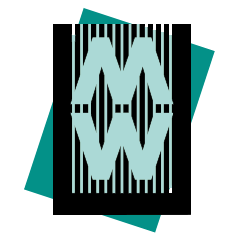GLAMi nomination: Audubon’s Birds Interactive Touchscreen
institution: San Diego Natural History Museum
category: Exhibition Media or Experience
http://www.sdnhm.org/exhibitions/current-exhibitions/extraordinary-ideas/
In August 2016, the San Diego Natural History Museum (theNAT) opened the Eleanor and Jerome Navarra Special Collections Gallery, a new permanent space dedicated to showcasing the holdings of its research library and rare book room. The core exhibition of the new space, “Extraordinary Ideas from Ordinary People: A History of Citizen Science,” uses library collections to highlight the role of amateur naturalists in the history of science.
The crown jewel of the exhibition is a rare edition of the gigantic “double elephant” folio of John James Audubon’s Birds of America (1860). Audubon was the consummate citizen scientist—a Kentucky dry-goods merchant and hobbyist artist who set out to paint North America’s birds. His dynamic work continues to inspire both conservationists and scientific illustrators after almost two centuries. Audubon broke with tradition to paint birds in lifelike poses and natural settings, exhibiting social behaviors, often in groups that included males, females, and juveniles. Several species he depicted are now extinct.
“Double elephant” is the name of the largest standard paper size used in book production. Despite its cost, Aubudon chose to produce his book using 50-inch high “double elephant” paper so he could paint his birds at life size. Double elephant editions are rare and impressive; when lying open, theNAT’s copy measures 50 inches tall and 54 inches wide.
When a rare book is displayed, only one page can be viewed at a time. The exhibit team wanted to allow visitors access to more imagery from the book while deepening their appreciation of Audubon’s skill. To do this, theNAT created a touchscreen that allows visitors to view 30 images of Audubon’s bird paintings alongside photographs of the living birds while listening to recordings of each bird’s call. The ability to compare the photos and the paintings side-by-side lets visitors appreciate the importance of scientific illustration in the days before photography, when an artist’s proficiency at accurately capturing details was the only way to visually document any living species. The bird calls turn the experience into a multisensory one while bringing each bird more fully to life.
Visitors explore the Audubon imagery on a 32-inch Elo 3201L interactive digital signage touchscreen, mounted in landscape orientation at a 60-degree angle on a 30-inch-high tabletop to meet ADA accessibility standards. The large monitor allows for a pair or social group to experience the activity together; stools are available so that visitors can sit. The program runs on an Alienware X51 R3 computer secured in a custom-built housing that also serves as the mount for the screen. The bird calls play on the monitor’s speakers in response to the touch of a bird icon. The audio continues while the user explores the images, until the file plays out or the user advances to the next bird. Consistent with the entire exhibition, all interpretation is offered in both English and Spanish.
Additional information (e.g. special considerations or additional context)
The exhibit team conducted user testing at multiple points during development of the interactive. This process informed all aspects of usability, particularly the ultimate design of the “zoom” feature. We learned that while most younger adults and youths intuitively touched the screen to magnify the image, and also used their fingers to pinch-and-zoom without prompting, many older adults did neither and needed to be cued. In response, we added two icons: a magnifier icon to indicate that an image can be enlarged, and an icon that mimes pinching-and-zooming the first time it appears, but then doesn’t appear again once the user has learnt this function.
Credits
Media production: Martin Baumgaertner, Thon Lorenz
Content: Margaret Dykens, Erica Kelly
Graphic design: Lydia D’Moch
Artwork digitization: Michael Field
Wildlife photography: John C. Avise, Glenn Bartley Nature Photography, Dan Delaney, Greg Hume, Kathleen Kent, Brian E. Kushner, Library of Congress Prints and Photographs Division, Mia McPherson/On the Wing Photography, Ian Murray/Wallace River Photography, Marie Read Wildlife Photography, Brian E. Small
Wildlife audio: Lang Elliott/Music of Nature
Licensing: Renato Rodriguez
Translation: Ana Martinez
Proofreading: Shelley Chung, Karen Levyszpiro, Claudio Luchina
Media housing fabrication: Kim Blackford
Project management: Beth Redmond-Jones, Bradley Tsalyuk








